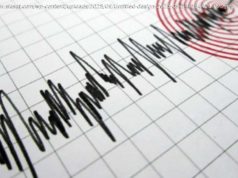The dire forecast for Hurricane Florence has prompted mandatory evacuation orders for more than a million people. Yet some will ignore the orders.
The forecast for Hurricane Florence is ominous.
Storm experts are projecting the storm will make a direct hit on the North Carolina shore, north of Wilmington, as a Category 3 storm. The National Hurricane Center says storm surge — which is often the deadliest component of a hurricane — could top 6-to-12 feet in some areas. Meanwhile, 15-to-20 inches of rain from the storm may cause flooding, both alongshore and inland.
Due to the severity of the forecast, more than 1.4 million people have been told they must evacuate from the shorelines of North and South Carolina, as well as parts of Virginia. Luckily, the worst of the storm won’t arrive until Friday, so there’s still time to prepare and leave.
“This is not a storm that you need to try to ride out,” North Carolina Gov. Roy Cooper told reporters Tuesday. “It’s historic and maybe once in a lifetime.
But inevitably, some people will refuse to leave; even people who have been issued mandatory evacuation orders. Though the evacuations are “mandatory,” it doesn’t mean police will be going door-to-door forcing people out.
Despite the local authority’s pleas, there’s no amount of messaging that will get 100 percent of a population to evacuate. “There’s a certain population that’s never going to leave,” Cara Cuite, a Rutgers psychologist who heads an NOAA-sponsored project on best practices in storm communication, said in a 2016 interview
Why? The reasons are a bit complicated — and they reveal a lot about how risk is perceived and communicated. Let’s break them down.
There are myriad environmental or personal reasons why people don’t evacuate.
During Hurricane Katrina, people who refused evacuation orders were cast in a negative light: as too lazy, too uniformed, or too self-centered to make the decision to leave. The decision to stay was framed as a negative choice. But those who made the decision to stay saw it completely differently.
That was the conclusion of a 2009 paper in Psychological Science. A group of researchers at Stanford and Princeton surveyed Hurricane Katrina survivors and people who were not in the storm’s path, asking them about their perception of the people who refused evacuation orders.
“There’s this mismatch between the way that the event was seen from the outside and the way that the people themselves actually experienced it,” Nicole Stephens, who led the study, said in a press release when the study was published.
The people who refused during Katrina were less financially secure than those who left, the study mentions, so they couldn’t leave as easily. (As a policy solution, it could make sense to give vouchers covering evacuation expenses to help ease the costs.) But the study concludes that doesn’t mean they weren’t proactive.
Their proactive measures included “connecting to others, being strong, and maintaining faith in God,” the study found. “Given the limited material resources available in working-class Black contexts, stayers more often than leavers emphasized the importance of connection to and caring for others.”
For these people, the thought of leaving was the selfish choice. We ought to remember that if we hear reports of significant numbers of people waiting out Irma at home. And through it all, people generally feel like they have agency. They’re making their own decisions.
In the course of her research, Cuite has been talking to first responders, asking them what works to get people to evacuate. Some approaches used are drastic, like writing Social Security numbers on people’s arms in permanent marker (so that search and rescue can identify their bodies), having people fill out “next of kin” contact form, or telling residents rescues will not be available in their neighborhood.
“It’s trying to make people scared,” Cuite says. “But the issue with scaring people is that you want to make sure they have the information they need to evacuate: Here’s how you evacuate, here are the best roads to take, here’s where the shelters are,” and so on.
(It’s important to note that it’s really difficult to do research on storm messaging. You can give people surveys about how they might respond, but it’s much harder to see how they actually do respond in an actual emergency.)
Overall, she stressed, evacuation warnings are really, really tough to get right. There are so many ways they can backfire.
For instance, take the “shadow evacuation” effect: That’s when people on the “safe” side of an evacuation border decide to leave too. This can clog up roads and other emergency response resources. And Cuite says the “crying wolf” effect is real. If emergency managers make catastrophic predictions with too much confidence, and then those forecasts change, people might not listen as carefully in the future.
In 2016, The New York Times outlined some strategies authorities are trying to communicate the urgency of a hurricane threat and what to do in one. For instance, authorities shouldn’t compare new storms to old storms because “making comparisons can give residents a false sense of security.” And it may seem obvious, but it is important for warnings to be as specific as possible, setting a deadline for people to leave.






